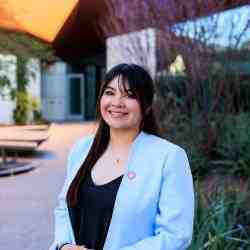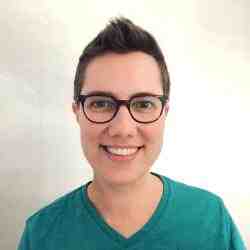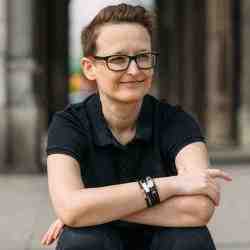Introduction
Scott Strode is building a new community-based network for supporting individuals in recovery from Substance Use Disorder (SUD). He is building a “tribe” through which community members can form meaningful strength-based relationships and build a sense of self-esteem and competence through group activities.
The New Idea
One of the biggest challenges of addiction recovery is the need to separate oneself from the individuals who are still active in their SUD and who often made up the majority of an addicted individual’s social network before making the decision to quit. This leaves people isolated while embarking on the significant challenge of sobriety. The Phoenix - a national network of several brick-and-mortar gyms plus volunteer-led programming at more than 40 partner sites across the nation, fulfills the need for alternative, healthy connections by surrounding vulnerable individuals in recovery with a community of active individuals choosing a sober life, who are also intimately familiar with their struggles. In addition to battling isolation, participating in The Phoenix’s activities, from rock climbing to yoga, gives individuals activities to occupy their time and achievements to help them build a sense of themselves as capable and strong. This constitutes a psychological bedrock and a new community which helps build lasting recovery.
The new group of sober friends and overcoming stigma is just the “tip of the iceberg.” The Phoenix’s network of gyms and social activities, free to anyone who has been sober for 48 hours or more, are staffed entirely by people who are themselves in recovery and can serve as peer role models. Democratizing the field of who can help people on the path to recovery is a major coup and peer-to-peer models help build a powerful sense of “tribe.” But Scott is pushing the field forward on two fronts. First, Scott notes that “tribes need to be healing tribes”. The Phoenix has an above average track record of success in helping people stay sober. Importantly, Scott points out that he feels many who relapse and/or even die from their disease don’t do so because of “their addiction”, but because of the underlying and often unaddressed trauma they live with daily.
In addition to scaling the culture of healing, Scott is increasingly focused on the challenges of the “wounded healer”. Scott believes that if we’re going to be leaders in the peer to peer models, we have to be leaders in how peers also receive support. Scott is working to lay the foundation of how staff and volunteers who engage in this emotionally difficult work of being a peer mentor are supported.
The Problem
Over 21 million individuals in the U.S. have a substance use disorder but only 10 percent receive the treatment they need. In 2016, there were 64,000 drug overdose deaths with over 20,000 due to fentanyl and synthetic opioids. In addition, 88,000 people die from alcohol-related causes annually. In other words, the average American is more likely to die from addiction than motor vehicle accidents, mass shootings and terrorist attacks combined. Addiction is a public health crisis with devastating consequences to individuals, families and communities across the nation. The economic cost is staggering with the country’s opioid crisis alone estimated to have exceeded $1 trillion from 2001 to 2017, and it is projected to cost an additional $500 billion by 2020.
Most public and private resources allocated to this issue are focused on much needed emergency care and episodic treatment programs that save lives but constitute only one of many steps on the path to recovery. Access to treatment is also a problem as wait-lists are long, and programs are usually prohibitively expensive for the majority of people in recovery. Though it is a well-documented fact that trauma, particularly adverse childhood experiences (ACEs), dramatically increases the prevalence of addiction, most treatment options available never get around to addressing this root cause. This means that 40 to 60 percent of people who undergo treatment for their dependencies end up relapsing.
Addiction is a disease of isolation and what most need to do to get better is to rebuild positive connections devoid of stigma and then begin to believe that they are worthy of love and help. The Phoenix offers its team members a way to build their self-esteem and focus on their new identity in sobriety where they have the emotional strength they need to recover and thrive.
The Strategy
Since 2006, The Phoenix has perfected what it means to build healing communities with people in recovery from addiction. Fitness is the tool they use to harness the transformative power of human connection, battling stigma and isolation in the process. Phoenix gyms are vibrant, magnetic spaces that are reclaiming the process of recovery as “cool”. They offer everything from rock-climbing to biking, yoga, meditation and CrossFit classes that are fun, safe, inclusive and accessible. They also organize yearly multi-day trips in the Moab Desert where members take on larger challenges and deepen their connections to each other and nature. The organization helps its members establish their sober identity and imagine new possibilities for their lives through fitness and community.
At the core of the Phoenix model is an emphasis on creating spaces that provide 1) a fun environment, 2) physical and emotional safety, 3) inclusivity and 4) accessibility. The only membership fee to join a Phoenix gym is 48 hours sobriety. Before joining, each member must sign a Team Member Agreement which sets the tone and the culture for the community. Thus, members are not just getting access to free fitness classes, they are buying into an ethos of contributing to a nurturing community. Scott and his team are mindful of ensuring this culture and that it permeates every aspect of the organization. Before each class, this philosophy is strengthened through what the Phoenix calls a “Circle Up” where the rules of the community are reiterated, and a short ice-breaker activity gives everyone a chance to share something personal in a welcoming space, building connection and empathy in the process. This check-in happens at the beginning and end of every activity. This is particularly important as there are new members joining every day and for many it is one of their first steps on their path to recovery. They may arrive feeling vulnerable and out of place, so making them feel welcome and surrounded by people who care and can relate to them is critical. This environment also helps in their choosing to come back.
Members attribute significant changes in their lives to their participation in The Phoenix: 73 percent say it improves their self-esteem; 82 percent feel emotionally safe there; 65 percent have improved attitudes about sobriety; and perhaps most staggering, 80 percent of active participants stay sober. As a point of comparison: an average of 40 to 60 percent of people who undergo 30-day treatments end up relapsing. Because the threshold of participating in The Phoenix programs is so low (48 hours of sobriety), those who do relapse know they are welcome to come back without judgment in just two days’ time, which helps prevent them from diving deeper back into their addiction. The program’s effectiveness has not gone unnoticed: drug court judges and probation departments have begun officially recommending the program as a treatment course in several cases.
To date, The Phoenix has reached over 30,000 people in more than two dozen states across the U.S. It offers daily classes through its brick-and-mortar gyms and in over 40 volunteer-run partner sites. By partnering with existing gyms who are donating their space to The Phoenix when it is otherwise not in use, Scott has been able to scale his model dramatically while keeping costs down. The plan is to continue to grow the network threefold in this way over the next few years.
The Phoenix recently launched a new campaign to reduce the stigma associated with recovery, because it is one of the factors that keeps people from seeking help. The “Stronger Than” campaign demonstrates that individuals in recovery are stronger than their addiction; stronger than alcohol, stronger than heroin, and stronger than stigma. The Phoenix celebrates recovery rather than trying to hide it, which impacts its core constituents but also helps address the biases that families and other community members often have about people in recovery.
The Phoenix offers a workforce development program where team members can become personal trainers and also a volunteer program where team members help others new in recovery. This is not only critical to keep programming peer-led, it is also becoming an important earned income strategy for the organization. Alongside the workforce development program, The Phoenix also generates revenue through operating a CrossFit gym open to the general public. They also partner with treatment centers where they deliver health & wellness and adventure-based programs. Aside from bringing a sustainable income source for the organization, these partnerships serve to spread the “nurturing community” model to those institutions and creates a bridge for clients to transition more seamlessly from treatment centers to The Phoenix community. Members of The Phoenix are also active fundraisers for the organization. Though these income generating strategies are a growing portion of its budget, the majority of The Phoenix’s $7 million plus annual budget continues to come from foundations, individual donors, and state and federal grants.
With the scaling of The Phoenix model well under way, Scott’s personal mission is to address the root cause of addiction by referring to ACEs. He has a dream of someday having a system that works in collaboration with probation, the criminal justice system, formal treatment, education and early childhood programs where everyone implements a trauma healing model to help interrupt the generational transmission of pain, thereby reducing the need for “numbing the pain” through SUD. The Phoenix network today is merely “the rails that will carry that load.”
The Person
Scott has been in long term recovery from substance use disorder for 22 years. He had his first beer at the age of 11 and did cocaine for the first time when he was 15, shortly after getting out of a mental health facility for having suicidal thoughts. At the time, he thought he was broken beyond repair. He only understood years later that his substance use disorder was a way to numb the pain he experienced due to trauma from his childhood.
Scott got sober in his early 20s. At the time, he was working at a shipyard in Boston as a carpenter and a counselor for at-risk youth enrolled in sailing programs. He realized he was living a double life, coaching young people in resilience during the day and then getting blackout drunk at night. This realization helped propel him towards sobriety. It was after getting invited into a boxing gym by a friend that he discovered the healing power of sport and eventually the great outdoors. Climbing mountains and crossing finish lines helped heal his self-esteem, which made it possible for him to remain sober. It is also through sport that he found a new sober and supportive community.
He likens finding recovery to getting out of a burning building: “we have a duty not to walk away when we know there are others still inside. Instead we may have to reach back in, in whatever way we can, to help pull others out.” So, Scott set out to build a scalable way for more people to find their way to recovery through a healing, sober active community.
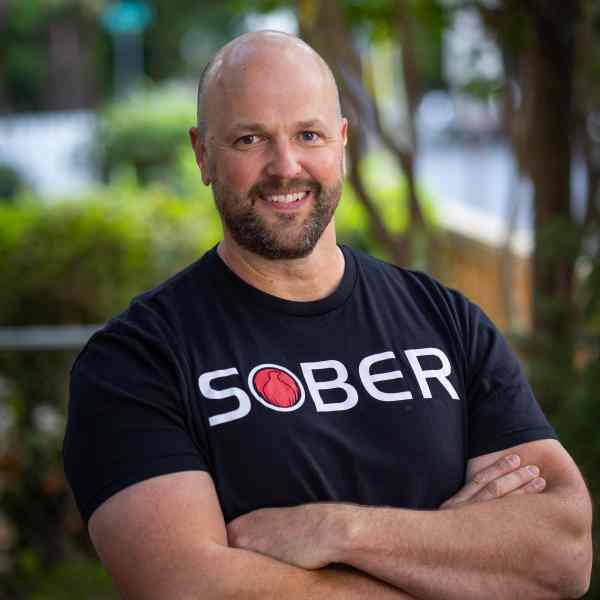
 Tile image
Tile image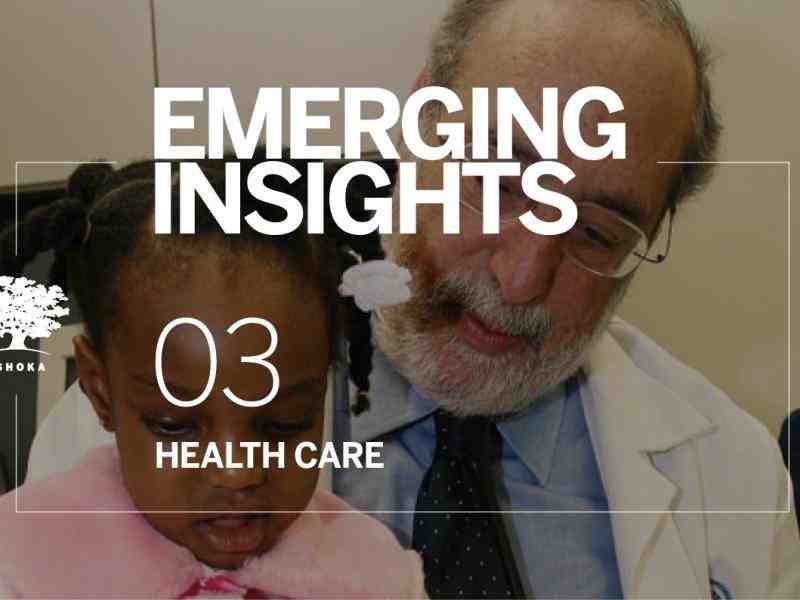 Tile image
Tile image
